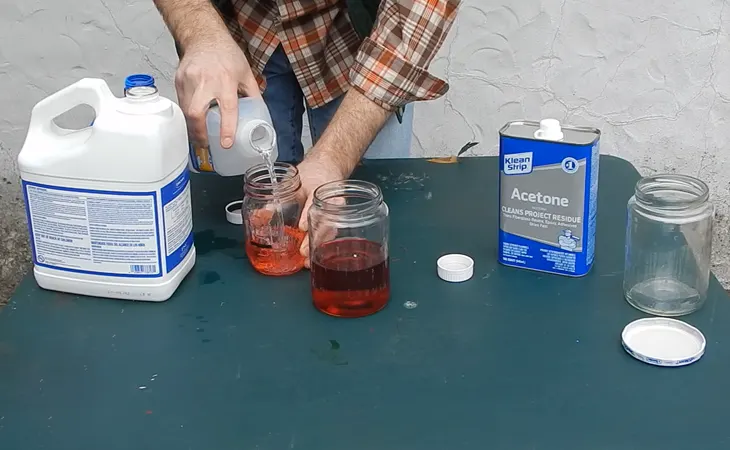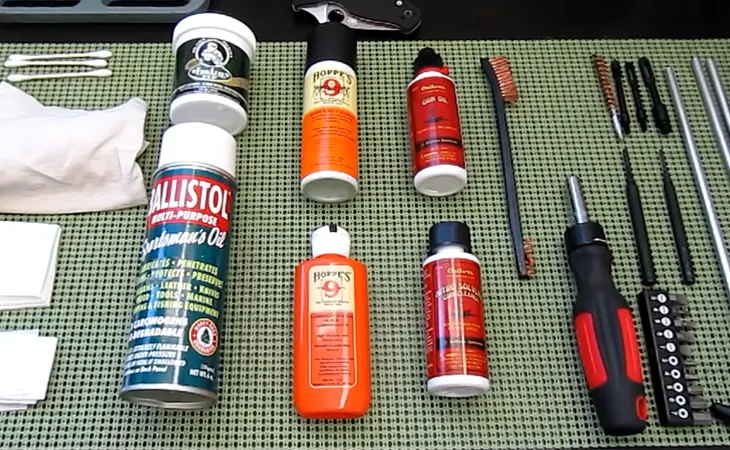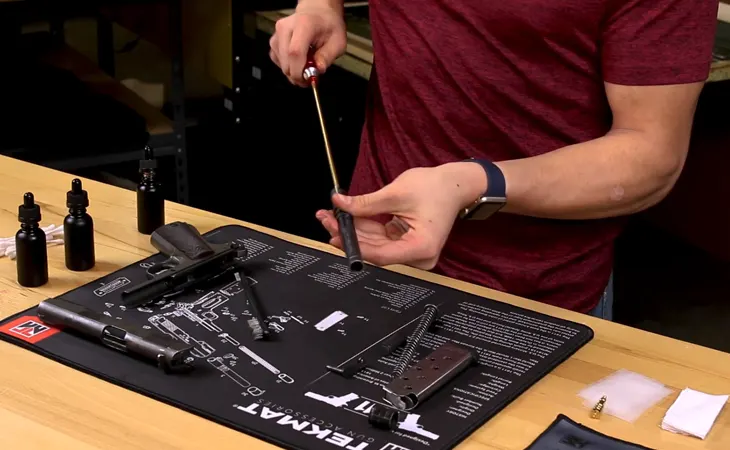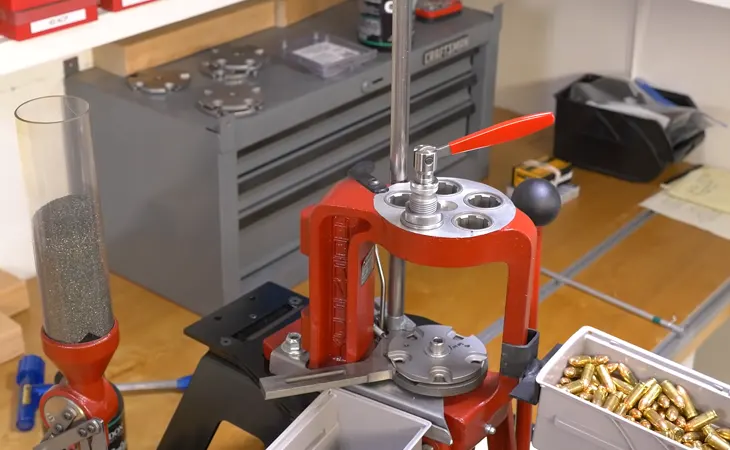Homemade Gun Cleaning Solvent; How to Make Properly?
Your gun will not perform as well as it could if it isn’t clean. If it gets progressively worse, it may become a safety hazard, or it may not work at all. Ideally, you’ll clean the gun using store-bought solvent after every use. Unfortunately, you may not have gun cleaning solvent on hand.
Others may choose to make their own cleaning solvent to save money. Regardless of your reasons why,
here is an overview on how to make homemade gun cleaning solvent.
Ed’s Red Bore Gun Cleaner is the Military Grade Gun Cleaning Solvent. This homemade gun cleaning solvent will not remove copper fouling from rifle bores.
However, it will remove primer residue and carbon residue. But using this solvent regularly will reduce the formation of copper deposits, so you can use copper residue remover less often than if you did nothing at all.
What is the recipe for Ed’s Red Bore Gun cleaner?

The key ingredients of Ed’s Red Bore or RB gun cleaning solvent are:
- 1 part Dextron ATF, GM D-20265 or later
- 1 part K1 deodorized kerosene
- 1 part Aliphatic mineral spirits
- 1 part acetone
- Stoddard solvent or equivalent, CAS #64741-49-9
We say K1 kerosene because K2 kerosene has a high sulfur content.
An optional ingredient: lanolin.
This could be anhydrous lanolin or modified lanolin, the latter of which you could get at the drug store. This turns the bore cleaner into a combination gun cleaning solution / lubricant.
Mixing Instructions for Ed’s Red Bore
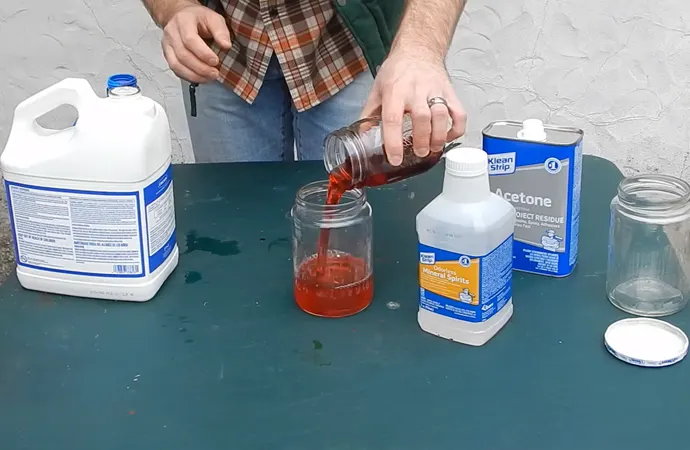
While you’re using deodorized kerosene, these chemicals can irritate the eyes and lungs. That’s why you should only mix these chemicals outdoors or somewhere where there is excellent ventilation. You’ll want to use a clean metal, PET or PVC plastic containers for measuring as well as holding the main mixture.
Do not use HDPE plastic,
since it is permeable and will allow some of the main ingredients to evaporate. Acetone will also attack the plastic until it eats through it.
Pour the Dextron ATF into the bucket first. Add the next ingredients one by one, going slow enough to avoid splashing. Mix them together with a chemically neutral mixer like a metal rod or plastic spoon.
If you’re going to add lanolin, melt it in a larger container. Then mix the liquid mixture into the bore cleaner mix until it is completely dissolved.
Label your container.
It is flammable, so it needs to be kept away from heat sources. Label it as dangerous to touch and store it somewhere that it can’t be accessed by children.
You can use this homemade gun cleaner like conventional gun cleaner. It won’t damage blue nickel finishes. However, the acetone in it will damage wood finishes, so clean it up whenever it is spills.
The Kitchen-Friendly Gun Cleaning Solvent Recipe

You can use a 50-50 solution of white vinegar and hydrogen peroxide. Use the same hydrogen peroxide that’s already in your bathroom and unflavored white vinegar from the kitchen pantry.
Mix them up in a 1-to-1 ratio. Put it in a spray bottle. You can use this to clean off stains and metal deposits that bore brushes and solvent have trouble removing.
How do you use it?
Use a gun cleaning patch and rub it into the bore. Leave it in overnight. Run a traditional solvent through the barrel, and you’ll see most of the lead and copper residue come out on the gun cleaning patches.
What are the Benefits of this solvent?
The benefit of this solvent is that it is non-toxic, though it will stink up the room you’re working in. However, it won’t eliminate the need to scrub the gun periodically, if you’re using it regularly.
Another point in its favor is that you can use this cleaning mixture and scrub the front of the revolver. Use a kitchen scrubbing pad like Scotch Brite, not a metal scrubbing pad.
Once you’ve cleaned the gun, apply a lightweight lubricating oil to protect it from moisture.
If you are interested in a non-toxic
off the shelf solution, you can use simple-green to clean parts of the gun. It won’t break down copper and other metal residue, but it will remove grime and dirt.
Get Ready to Hit the Auto Parts Store
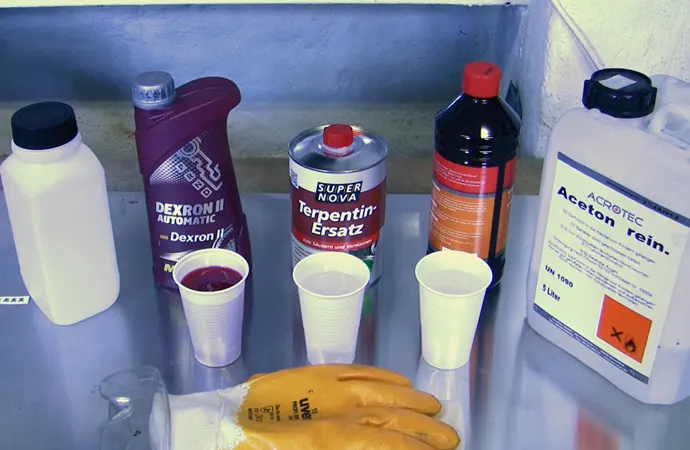
One popular DIY gun cleaning solvent relies on automatic transmission fluid or ATF. This will be mixed with kerosene, odorless mineral spirit and acetone. One version of this mixes WD-40 with 3-in-1 oil, and kroil instead of acetone.
Kroil is 1 part transmission fluid and 2 parts mineral spirits. Some paint thinners contain enough mineral spirits to be used in the recipe.
These chemicals will emit a lot of fumes, so only mix it somewhere with a lot of ventilation. Keep this mixture away from wood, since the acetone will discolor wood panels.
Use Your CLP
CLP is a cleaner, lubricant, and preservative. If you need to clean your gun quickly such as when you’re in the field or in an emergency, you can clean the gun quickly with a bore snake and a dab of CLP. This approach has several benefits.
The first is that you can use something you already have, whereas most gun cleaning kits don’t include a gun cleaning solvent.
The second is that you know it is safe for a gun. The downside is that it can’t eliminate all of the residue building up inside of the gun.
Break Out the Dish Soap
Dish soap is made to break up grease and grime. You can use it to clean inside the gun, though it won’t remove metal residue. This is a cheap and readily available solution.
The downside is that you have to use water to remove the soap residue. Then you have to dry it well to prevent rust, and that’s the challenge. That is one reason why we don’t explicitly recommend this method.
Yet it is one reason why you may hear jokes about taking your gun into the shower to wash it, including jokes about using bath soap.
Don’t use bath soap on your gun, because it is too hard to remove.
Final Words
There are a number of alternatives to gun cleaning solvents for cleaning your gun in a pinch, though each of them comes with their attendant risks and downsides.
We’d recommend using proper gun cleaning solvent whenever possible.
